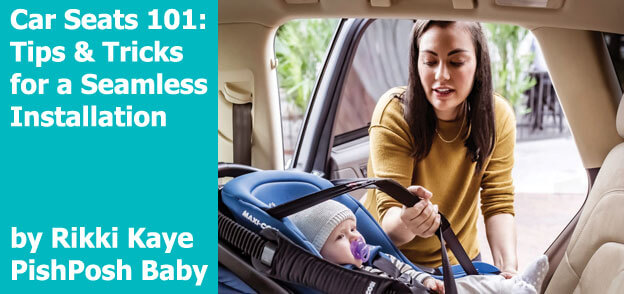As busy parents, we spend a lot of time on the road with our little ones – and the most effective way of keeping them safe during travel is to ensure that your child is both in the correct seat and the seat is correctly installed. Your child’s car seat reduces the risk of potential harm by up to 82% so you’ll want to check that their seat is the safest it can be!
What is the Safest Vehicle Seating Position For A Car Seat?
The safest vehicle seating position will depend on a few factors, including the child’s height, age, and weight, but generally, the safest vehicle seating position is the center rear of the vehicle, as that seat is furthest from the impact and away from the airbags.
Installing the Car Seat
The NHTSA (National Highway Traffic Safety Administration) recommends paying close attention to the car seat’s instruction manual to ensure that you are installing the car seat correctly. Most car seat manufacturers also have a plethora of easily understandable online instruction videos that will walk you through the installation. Reading the section in your driver’s manual regarding car seat installation is also a great idea.
Common Installation Mistakes to Avoid
There are some all-too-common installation errors that you can easily avoid by simply learning about them. Pay attention to the following:
- Improperly Routed Harness: The harness may look like it’s properly routed through the padding, but it may not be routed correctly through the shell. Be sure that the harness is routed properly and is not twisted at any point.
- Incorrect Recline Angle: This is something important to look out for when setting up an infant car seat. All bases are adjustable so you can find the position safest and most comfortable for your child.
- Carrying Handle Position: Make sure that the car seat carrying handle is in the correct position for vehicle travel. Many carry handles also serve as rebound bars for added protection.
- Secure Lower Anchor: Check that the lower anchor on the car seat is tight enough.
- Skipping the Base: Generally, if your car seat comes with a base, it’s always best to use it. The base will reduce the number of times the car seat needs to be anchored to the seat, turning car seat installation into a one-time task, and allowing parents to focus their full concentration on doing it properly. (Car seats that don’t have a European belt path require the use of the base at all times.
- Did you Nail it? Let’s See: To ensure that the car seat is installed securely enough, it is recommended to perform the Inch Test after installation. Grip the car seat near the belt path and pull it, making sure that it can’t move more than an inch in either direction.
Properly Installing a car seat is a process that will ensure your child is safe every time he goes in the car. Follow these tips to be sure that your child is as safe as possible during car rides!
BIO:
Author: Rikki Kaye, a baby gear expert at PishPosh Baby
Rikki Kaye is a baby gear expert who is passionate about keeping up with the industry trends in the world of baby gear. With the ever-changing world of technology and innovation, there’s always something new to research and share! As content director at PishPosh Baby, an exclusive baby gear company, she gets to spend her days doing what she enjoys; sharing helpful information about baby gear with families across the US.

